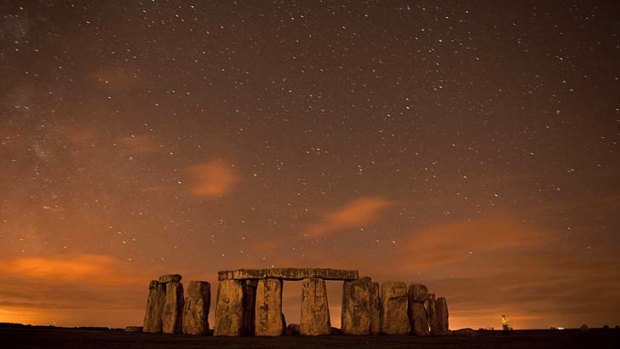
Rock gods ... Stonehenge's nearby earthworks are as important as the monument itself.Credit: Reuters
After decades of neglect, Stonehenge's mysterious surrounds are getting the upgrade they deserve, writes Ian Vince.
It is one of Britain's most popular tourist attractions, a World Heritage site and a relic of utmost importance in unravelling our past. It serves as an icon of Britain, its trademark trilithons a visual shorthand for heritage, hippies and unknowable mystery. It has been immortalised by Constable, Wordsworth, Hardy and Vonnegut. Spinal Tap named a song after it and in the film Help!, the Beatles sang nearby.
It's also a symbol of proprietorial greed, its £7.80 ($11.80) entrance fee allowing passage through a dank tunnel and a walk around, rather than among, the stones. Stonehenge, encompassed by an aura of utilitarian tat - a shabby entrance, chain-link fences and the thunder of two busy roads - is as old and as important as the Egyptian necropolis at Giza. But you wouldn't guess that from its presentation, which has all the aesthetic allure of a bus station. After nearly 30 years of dead-end schemes, English Heritage has finally begun work to bring Stonehenge back to its proper setting, starting with the construction of a new visitor centre. It will feature artefacts on loan from local museums, as well as 21st-century multimedia and the ubiquitous gift shop. Its construction also promises to sweep away a busy road, the fence, the car park and a jumble of "temporary" buildings. A low-key transit system will ferry visitors to and from Stonehenge and stop off at points between.
"People arrive here and focus on the stones but lose an opportunity to see what else is out there," says English Heritage's head of Stonehenge, Peter Carson. "The new entrance should allow them to appreciate the landscape before they see the jewel in the crown." It is what visitors to Stonehenge have been missing: the ancient earthworks and burial mounds flecked across a chalk downland are as much a part of the monument as the stones themselves. Removing the road and fence that runs to the north will unite Stonehenge with the Heelstone, the outlying monolith that marks the end of the Avenue - the ancient processional route to the stones.
Elsewhere on the down are earthworks even older than the henge, and access to them will be eased. A visit to the Stonehenge Cursus, an earthwork more than 2.4 kilometres long, will be aided by a stop on the transit system, while the sites of 10,000-year-old mesolithic postholes 75 centimetres in diameter and the oldest man-made feature on the down, will be exhumed from under the car park.
Guardian News & Media
Sign up for the Traveller newsletter
The latest travel news, tips and inspiration delivered to your inbox. Sign up now.